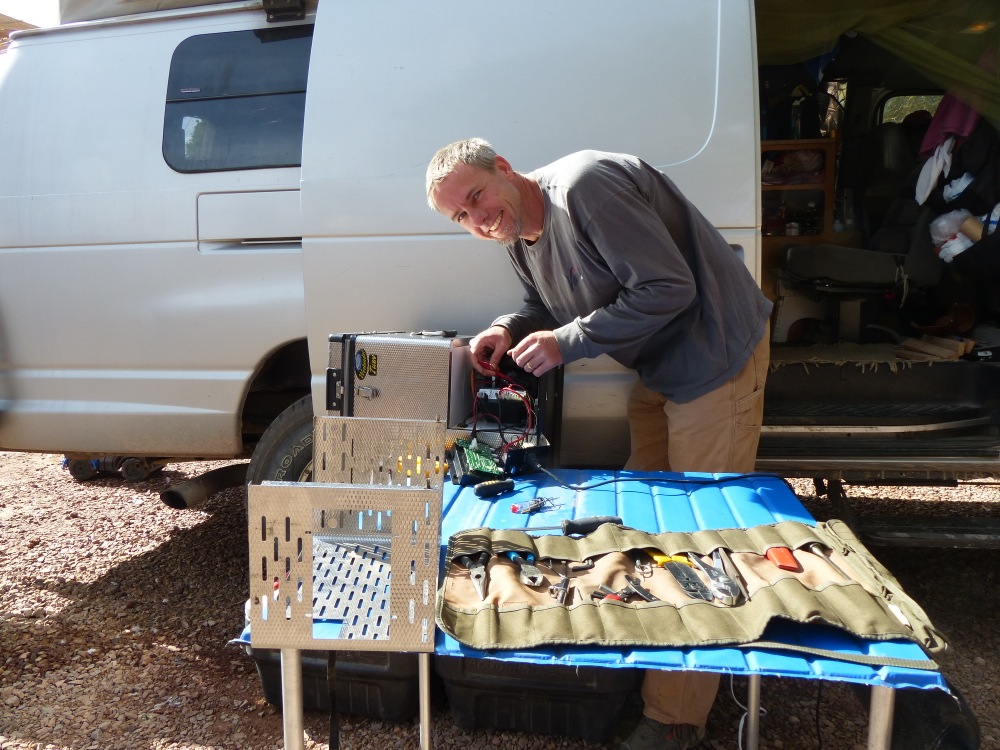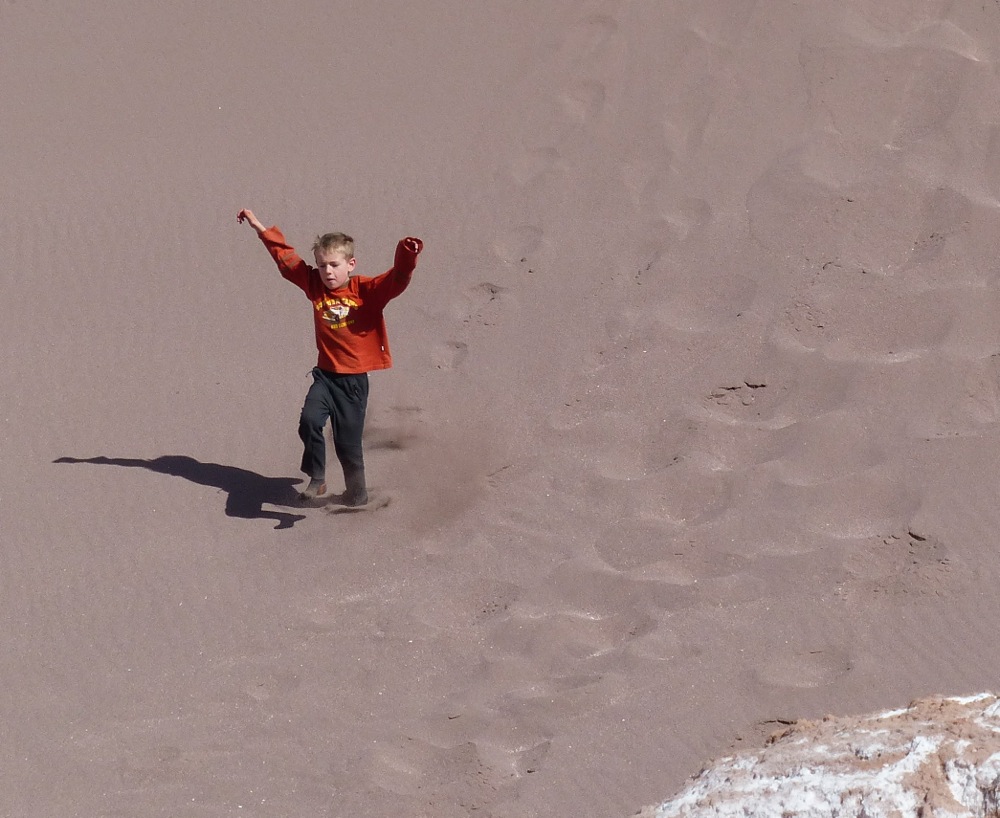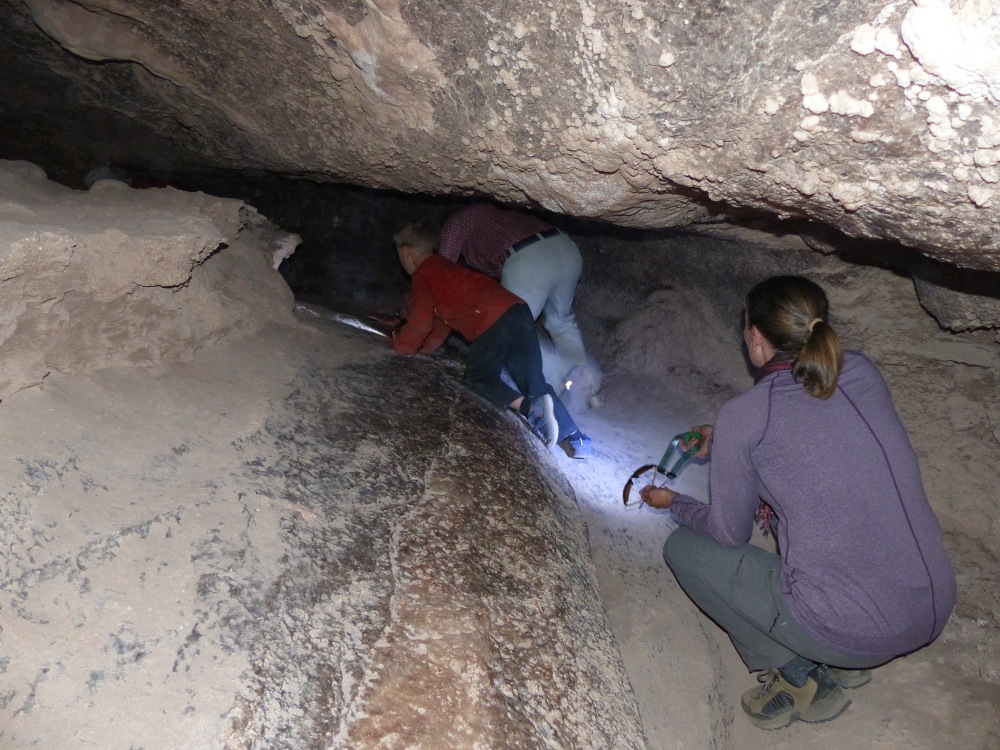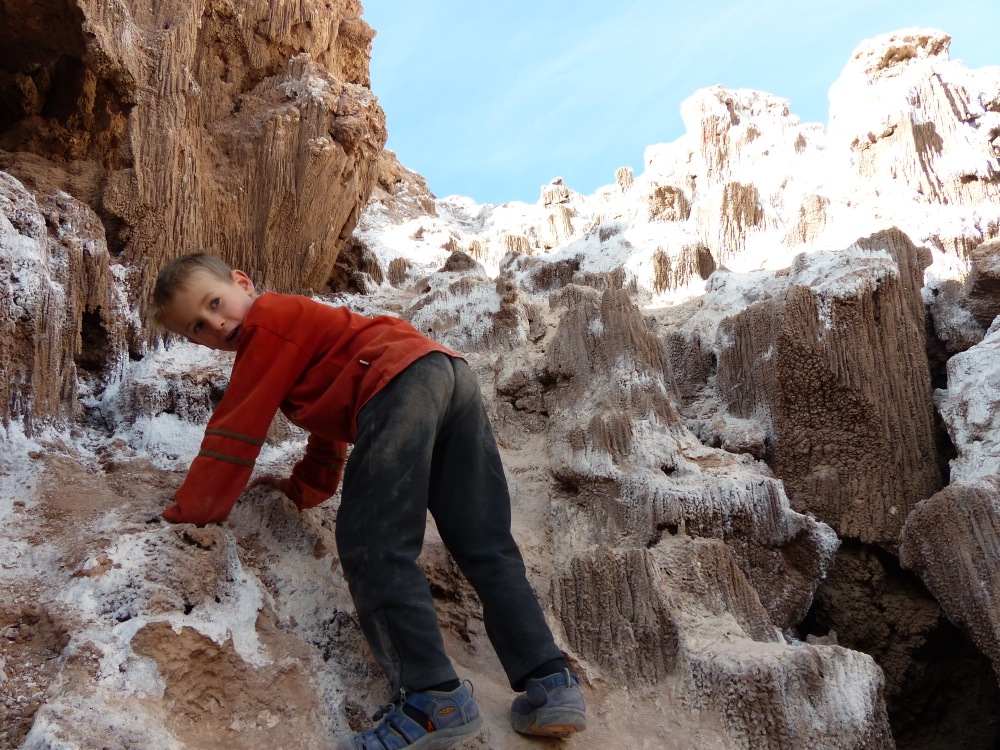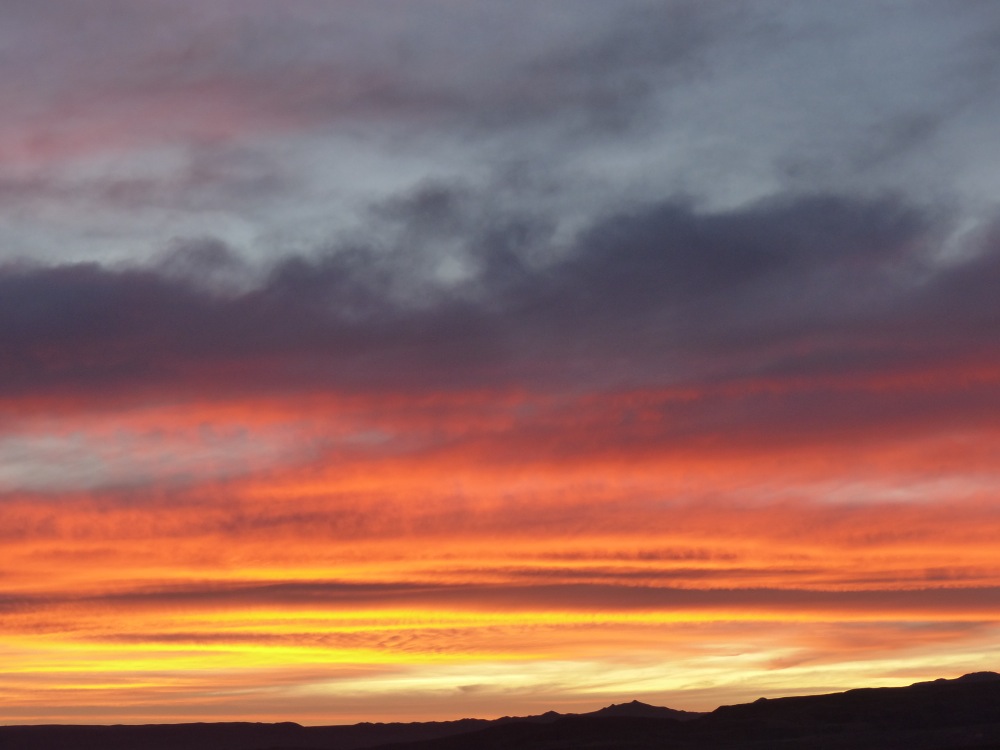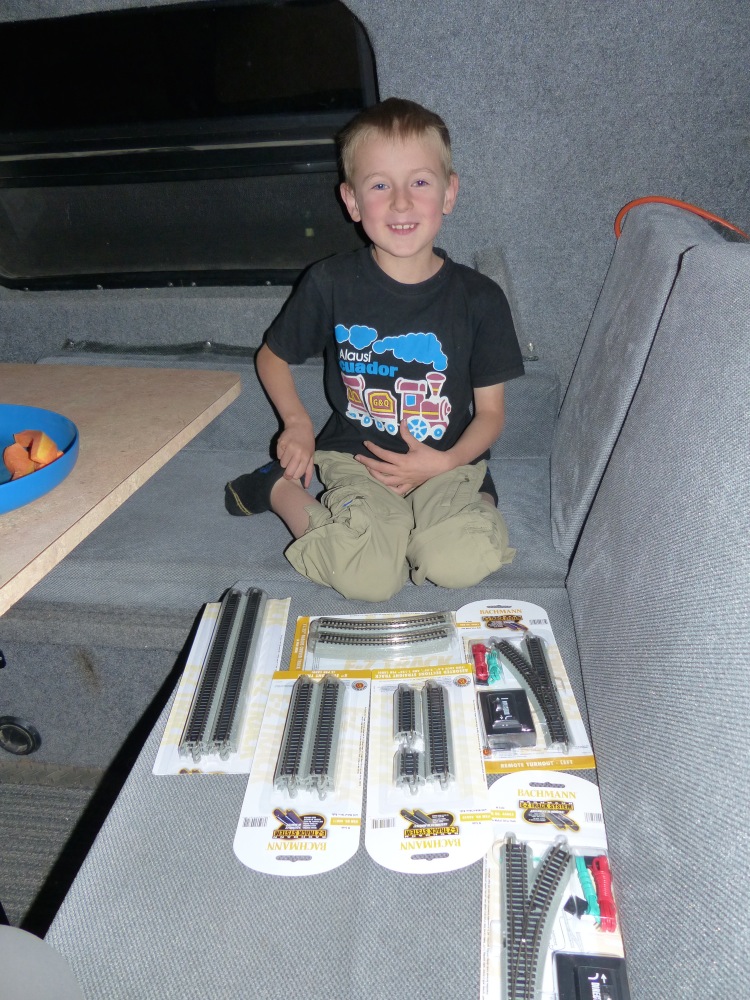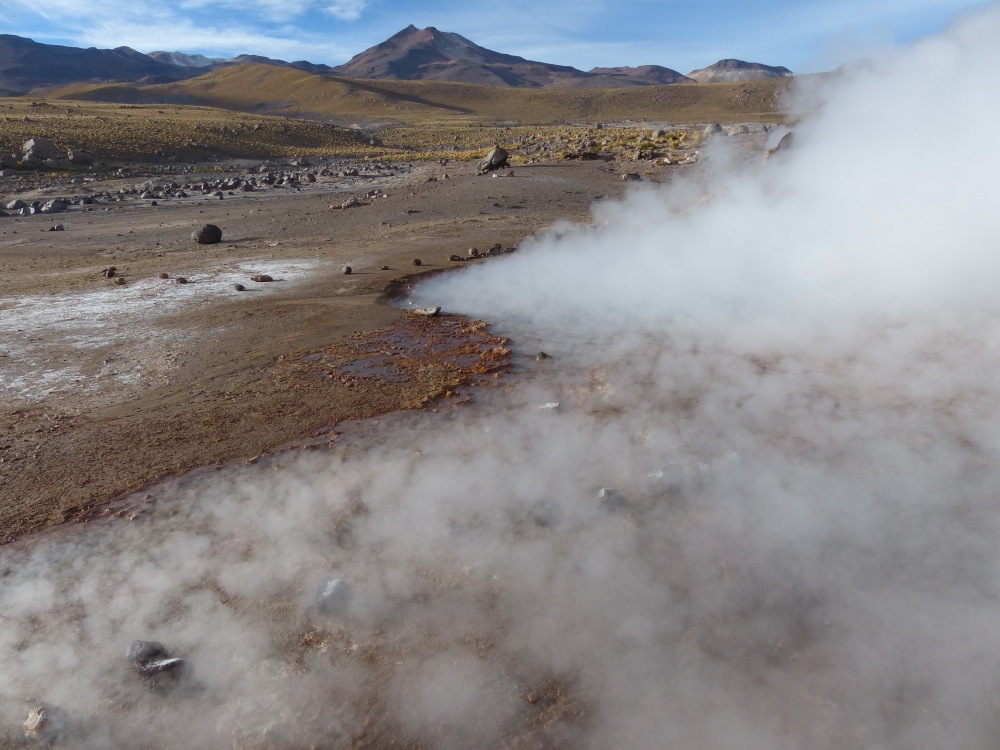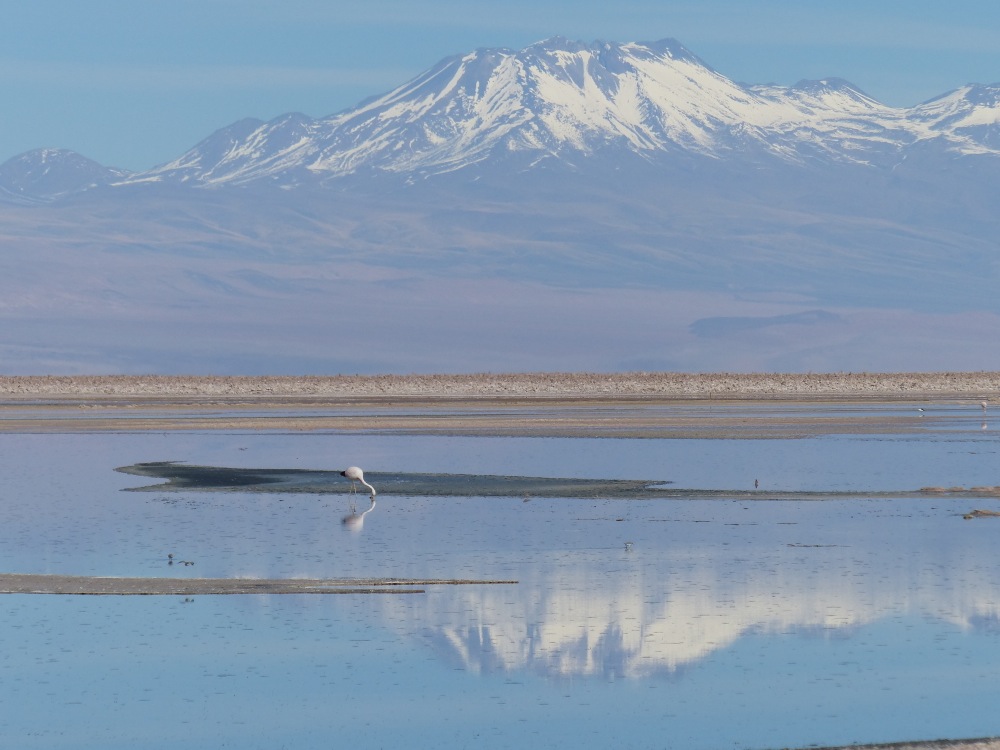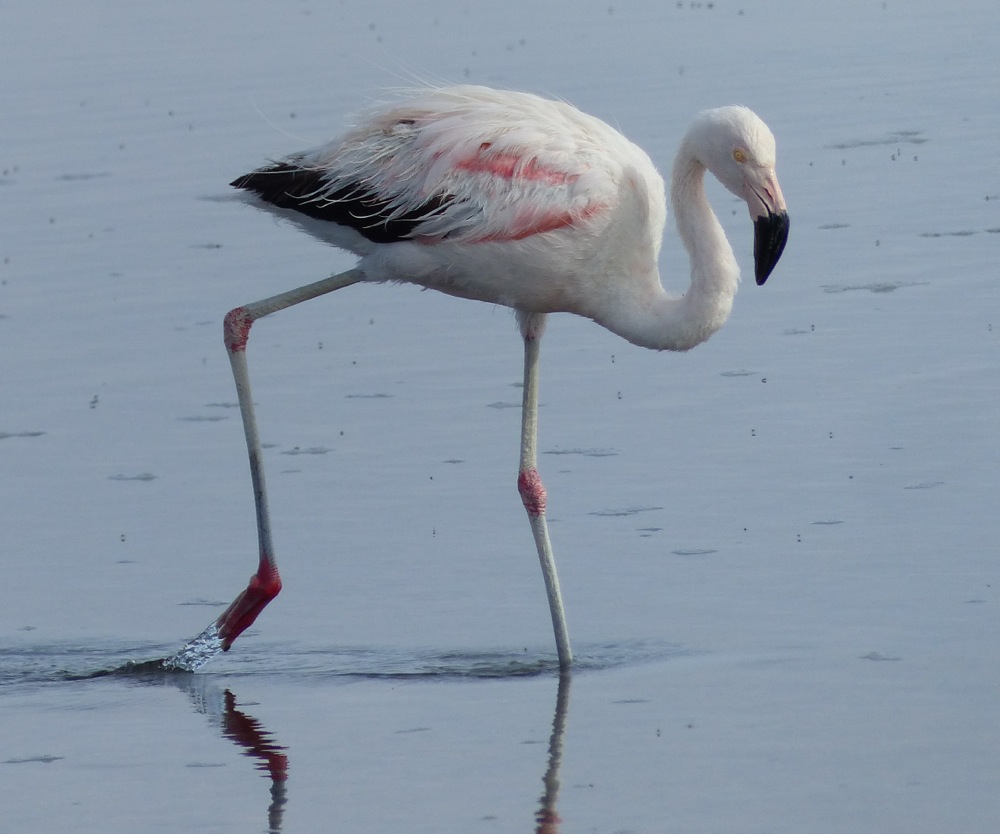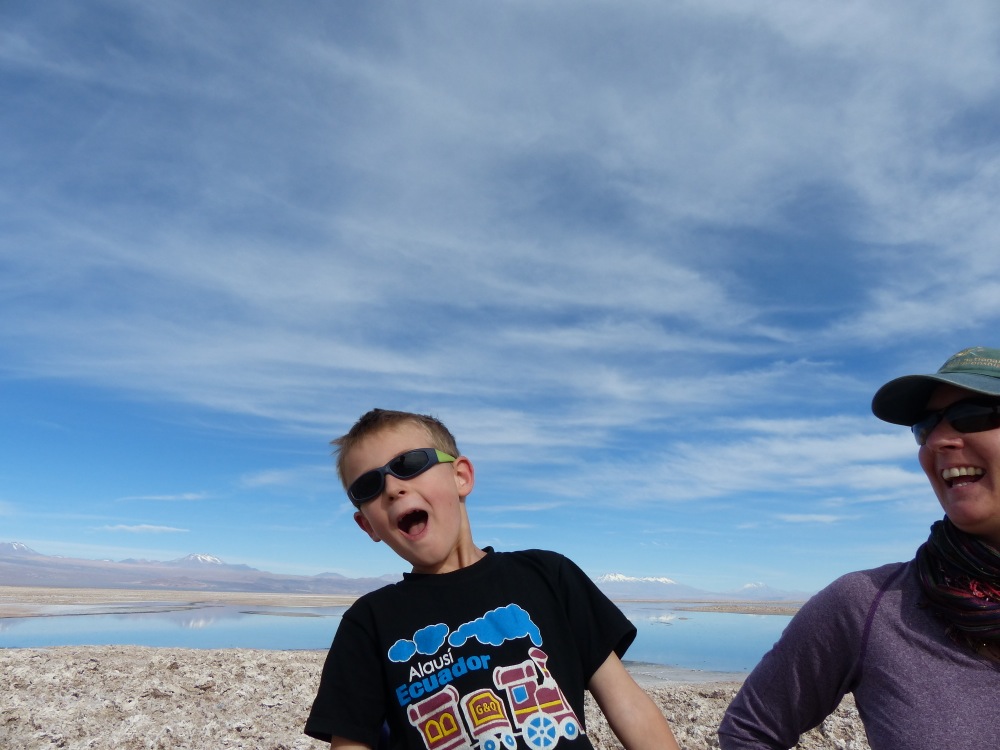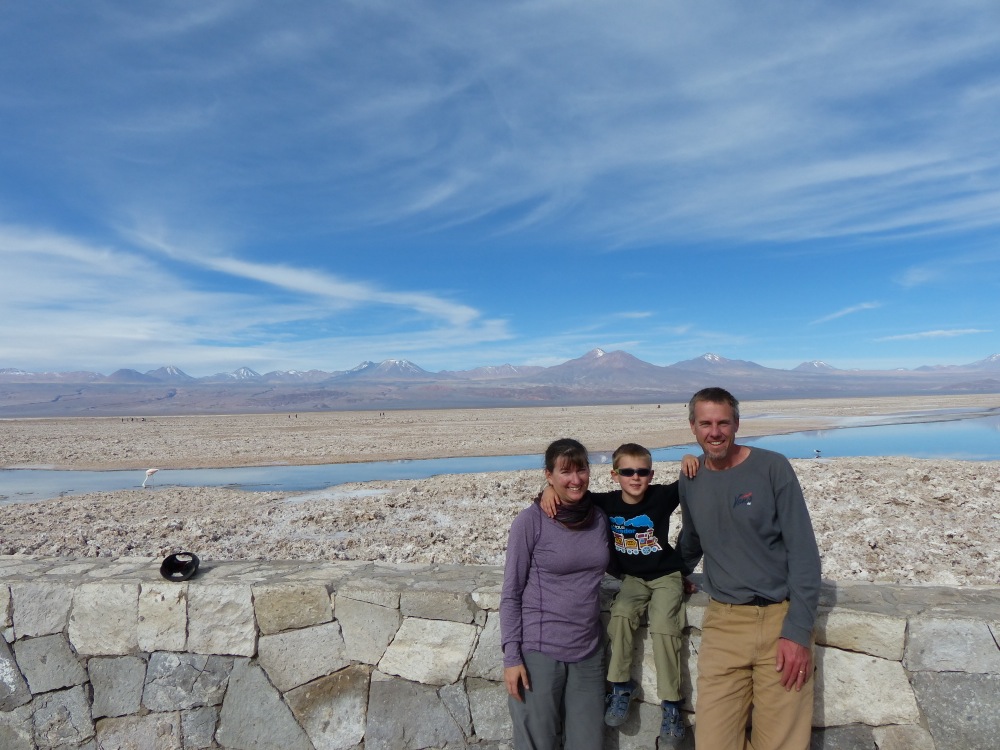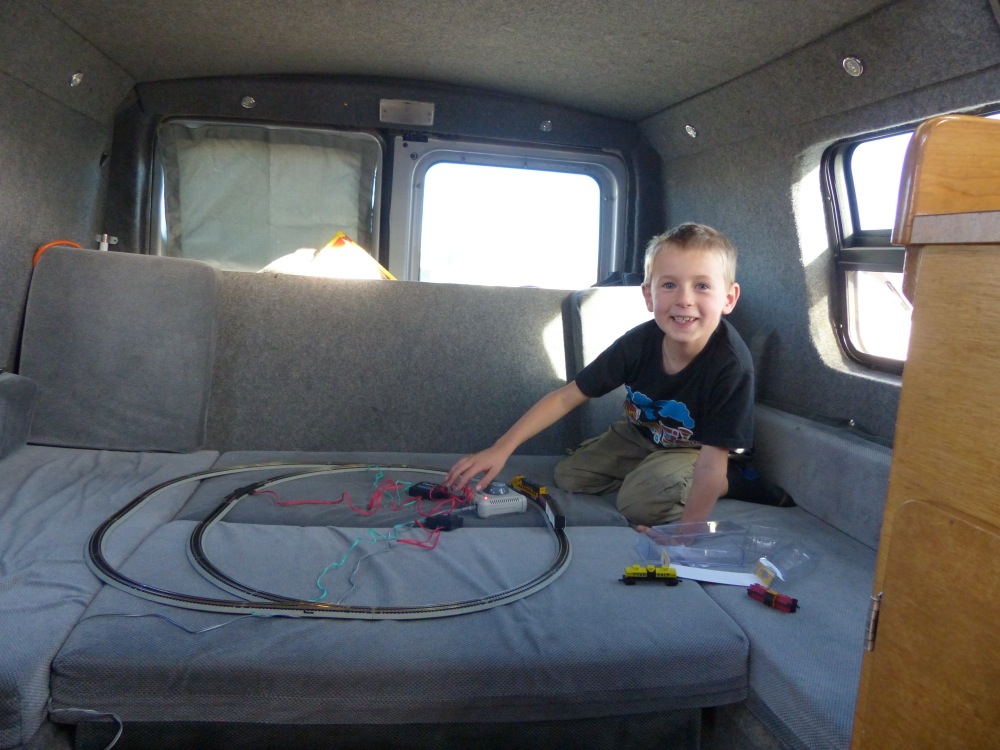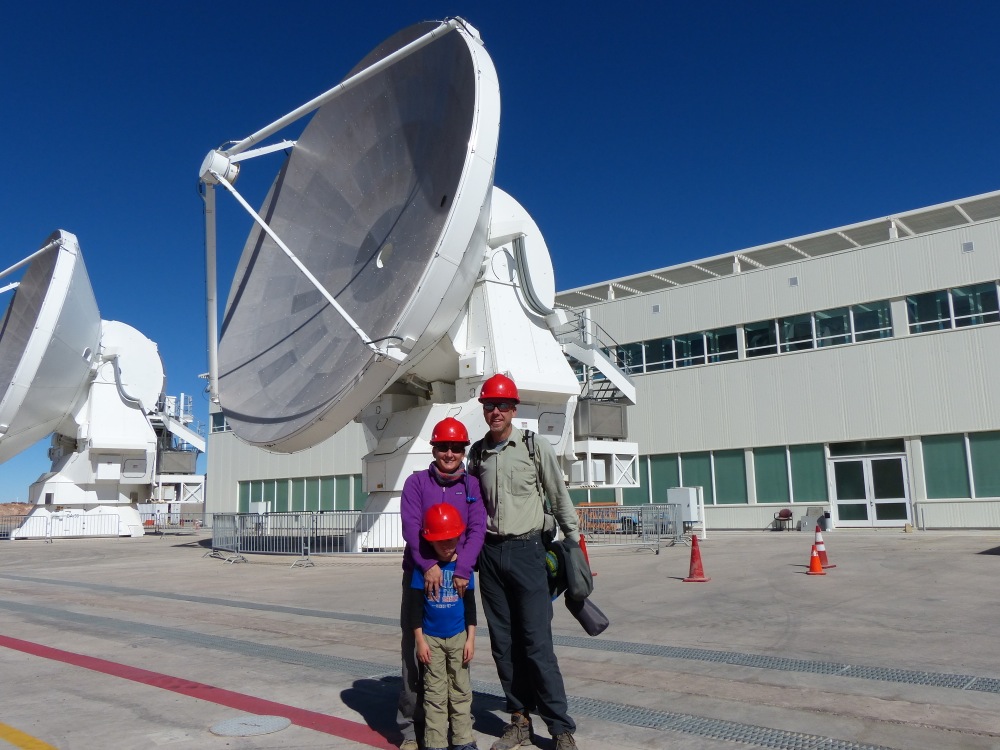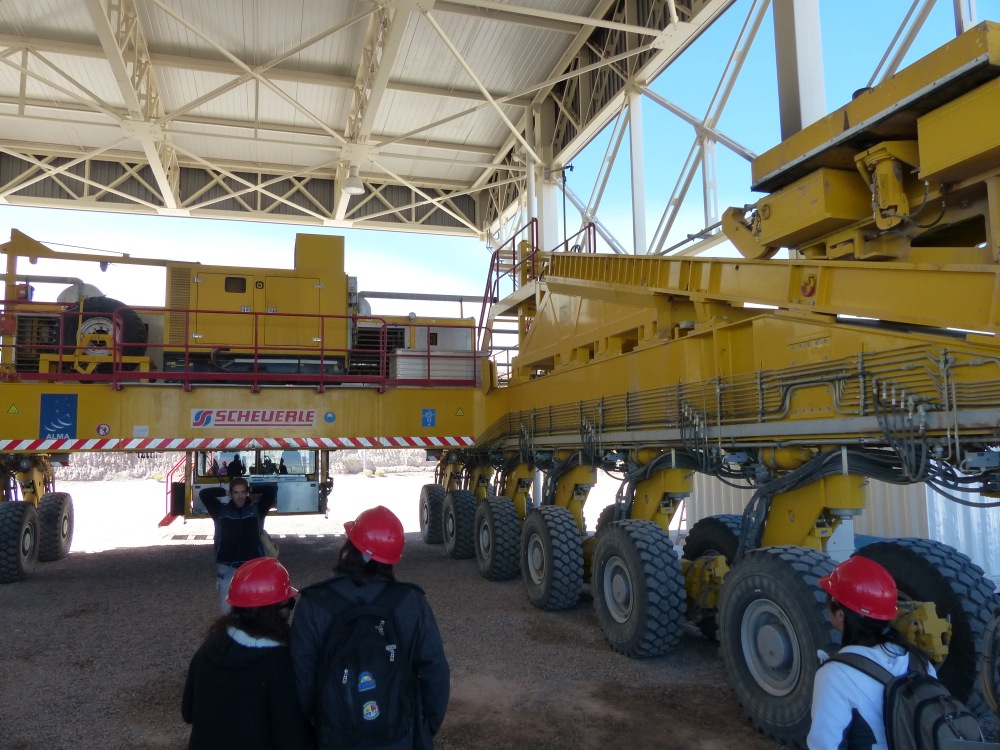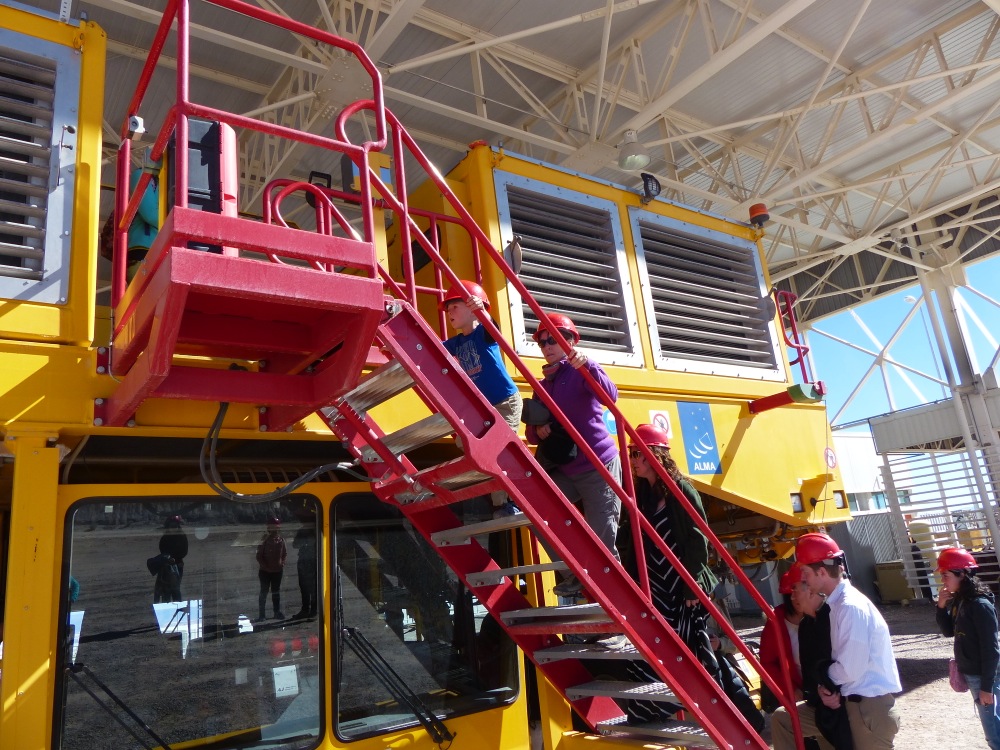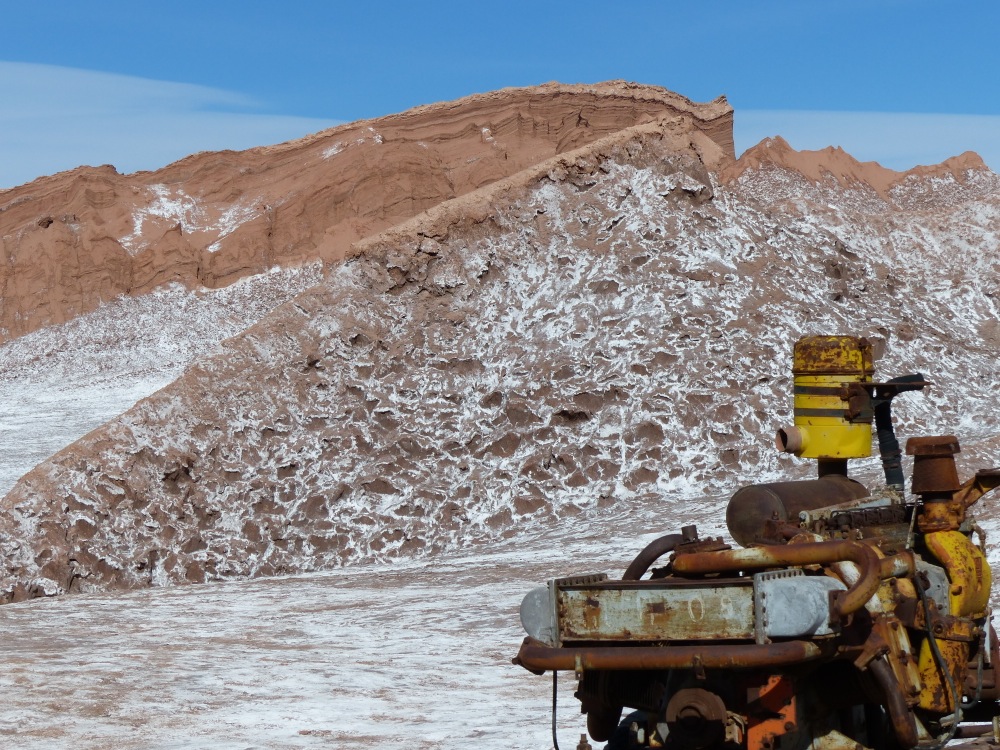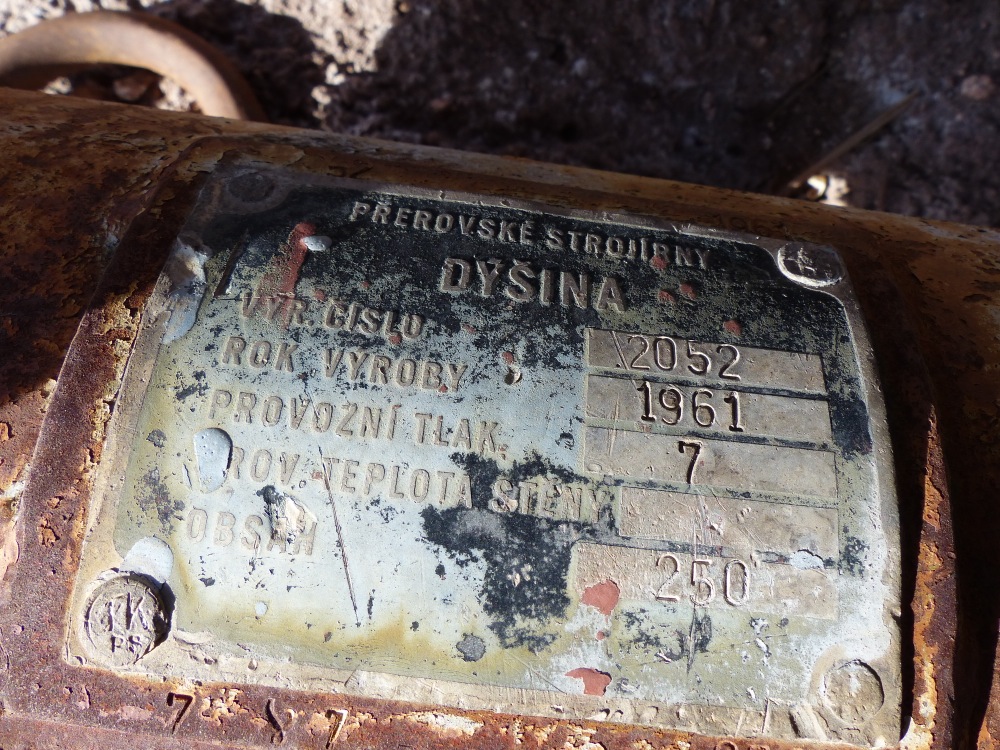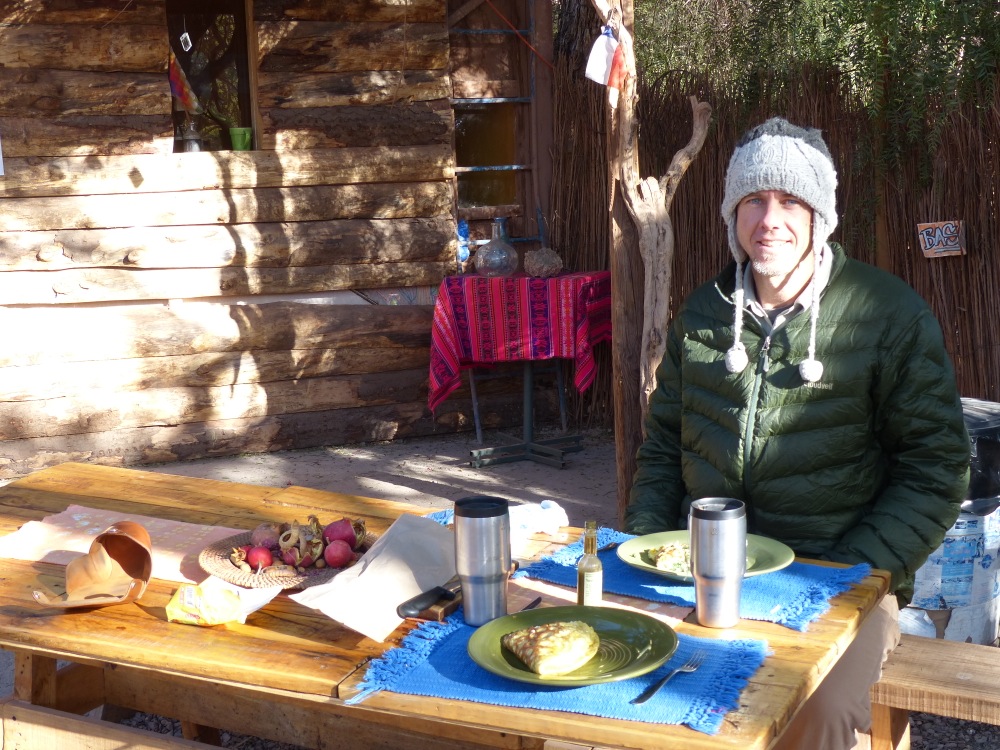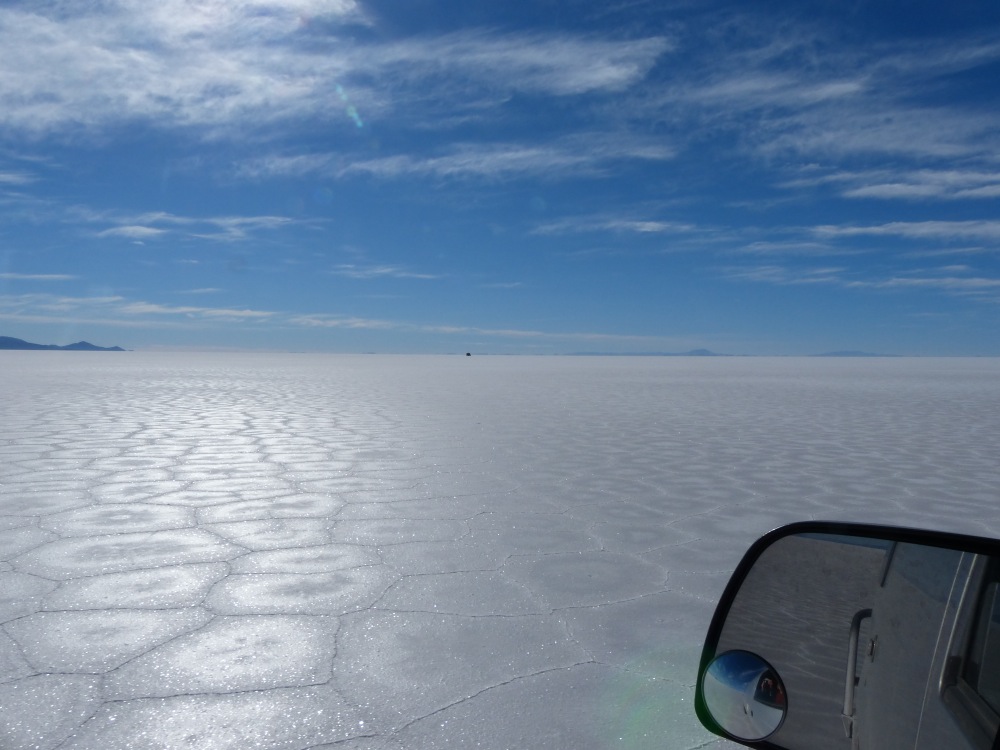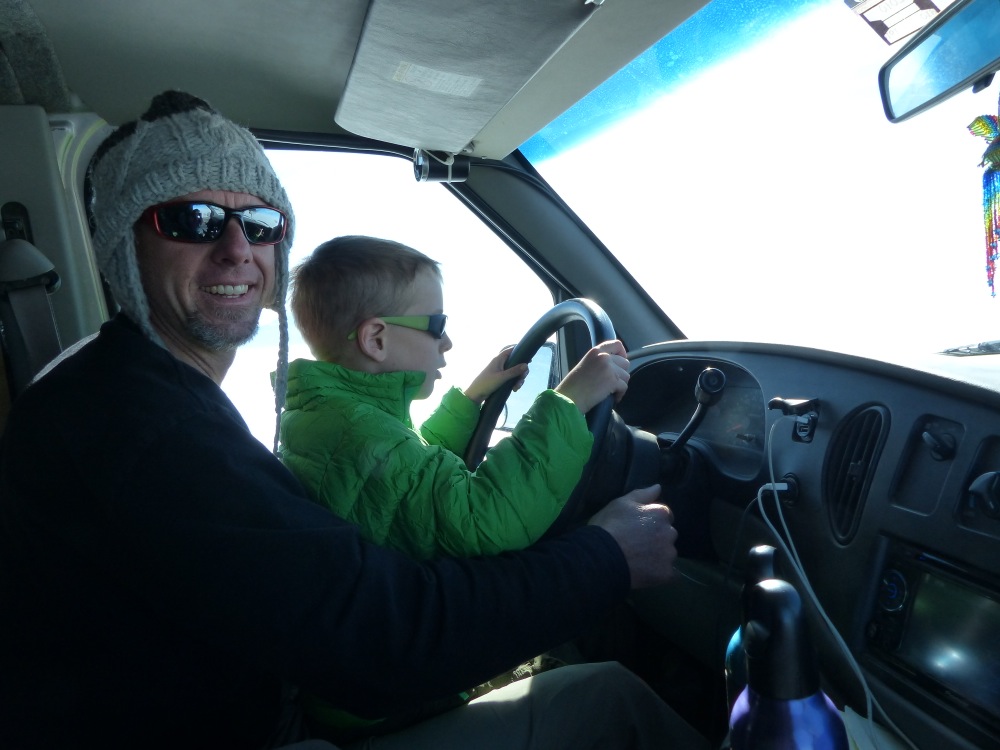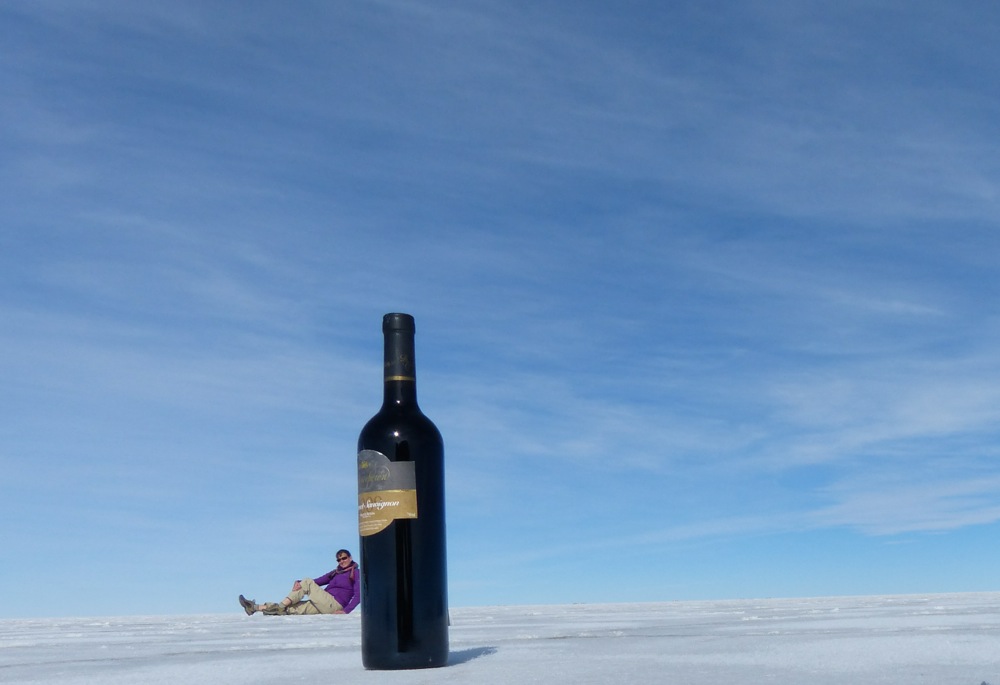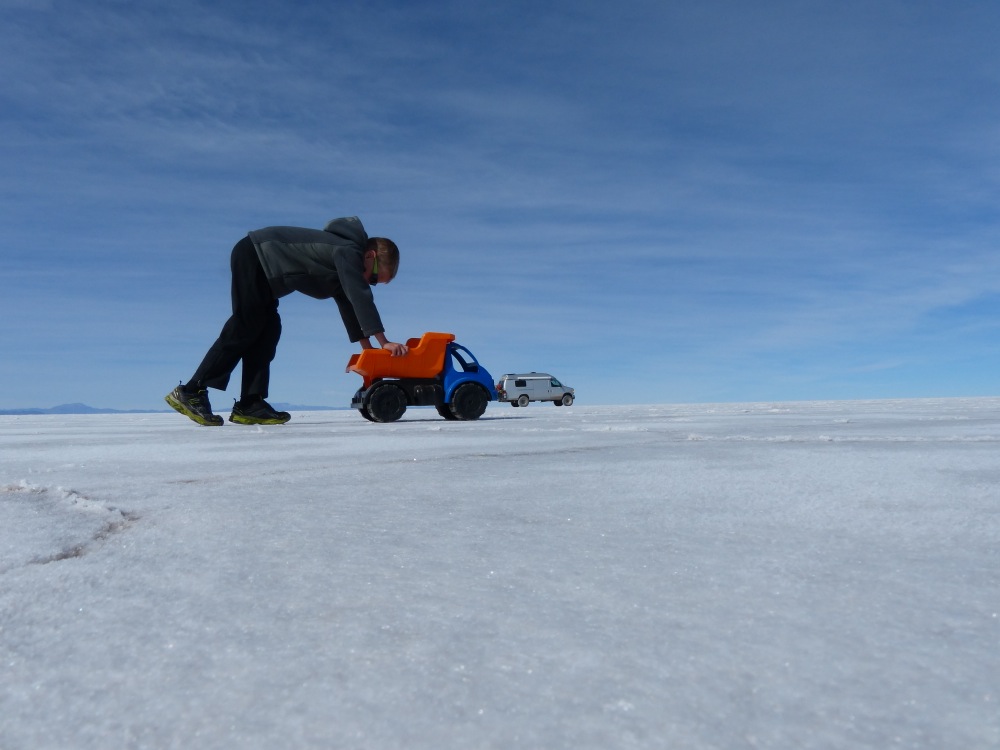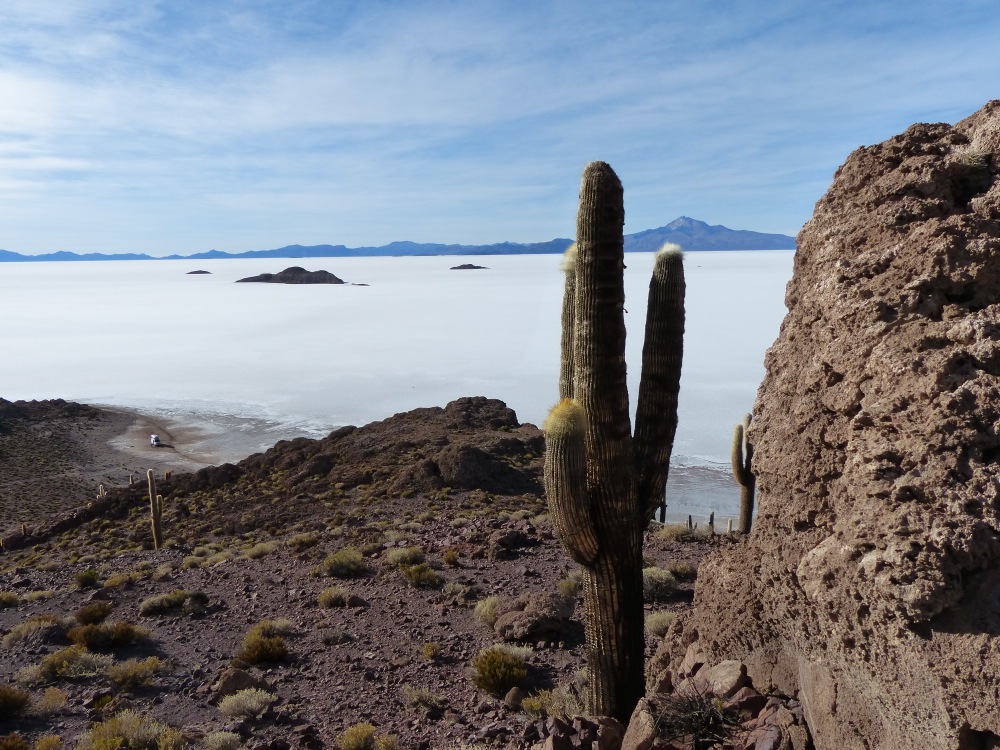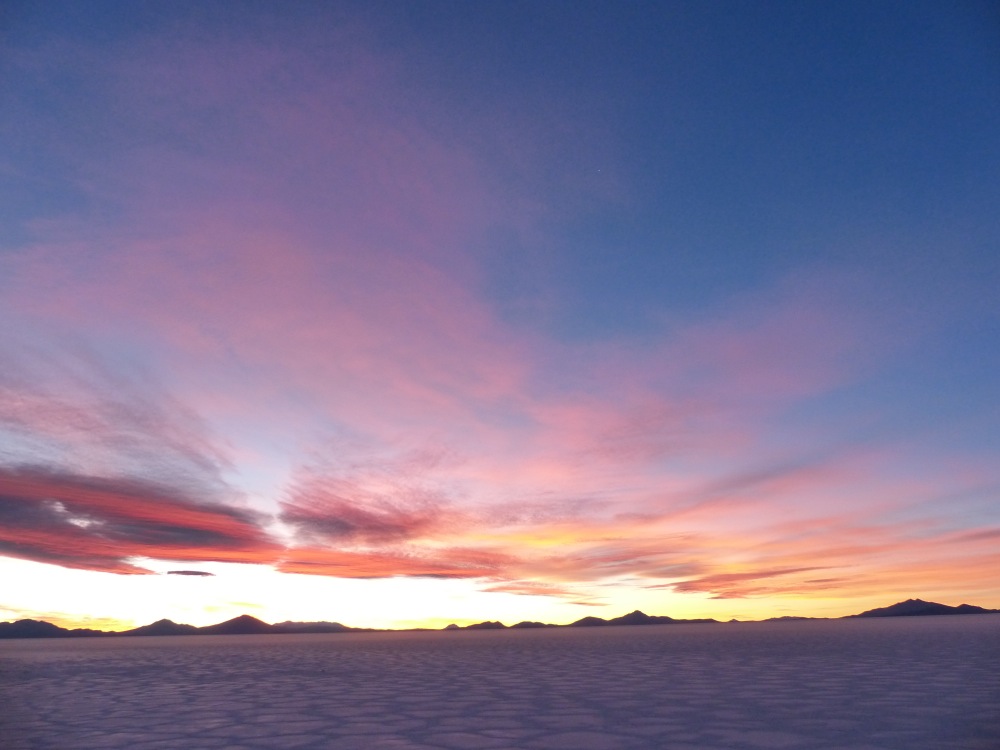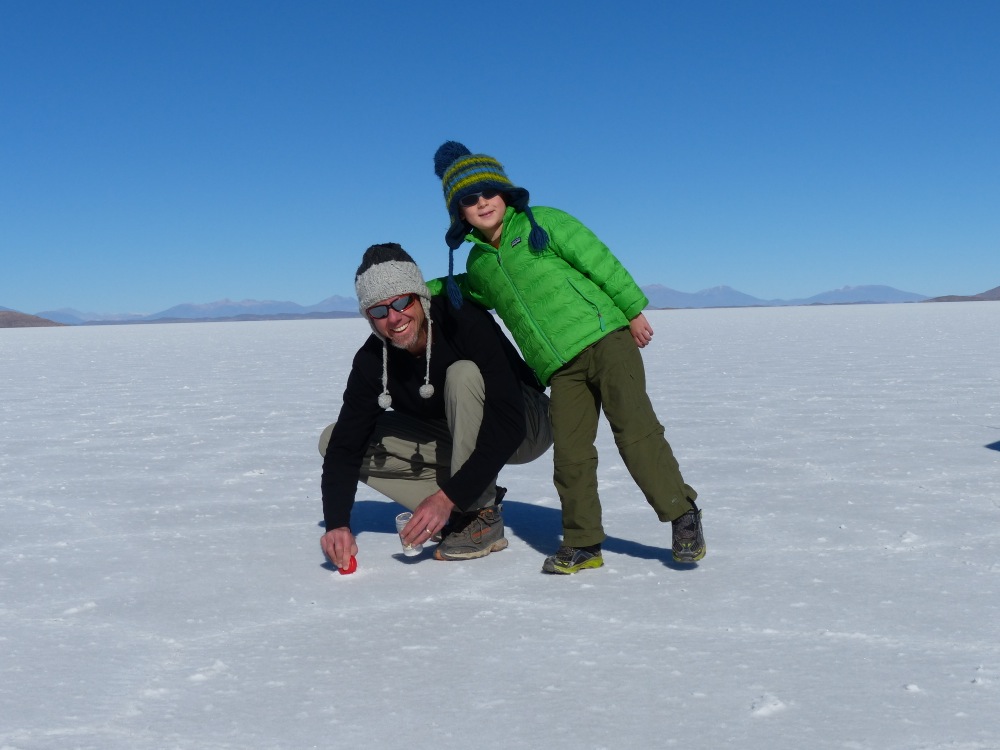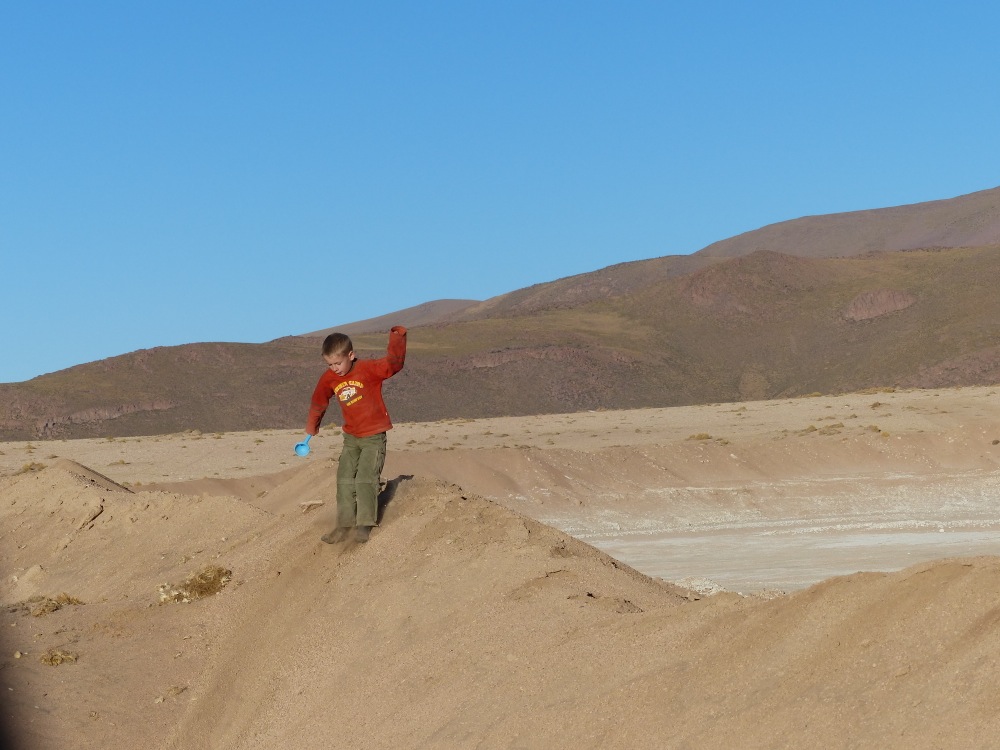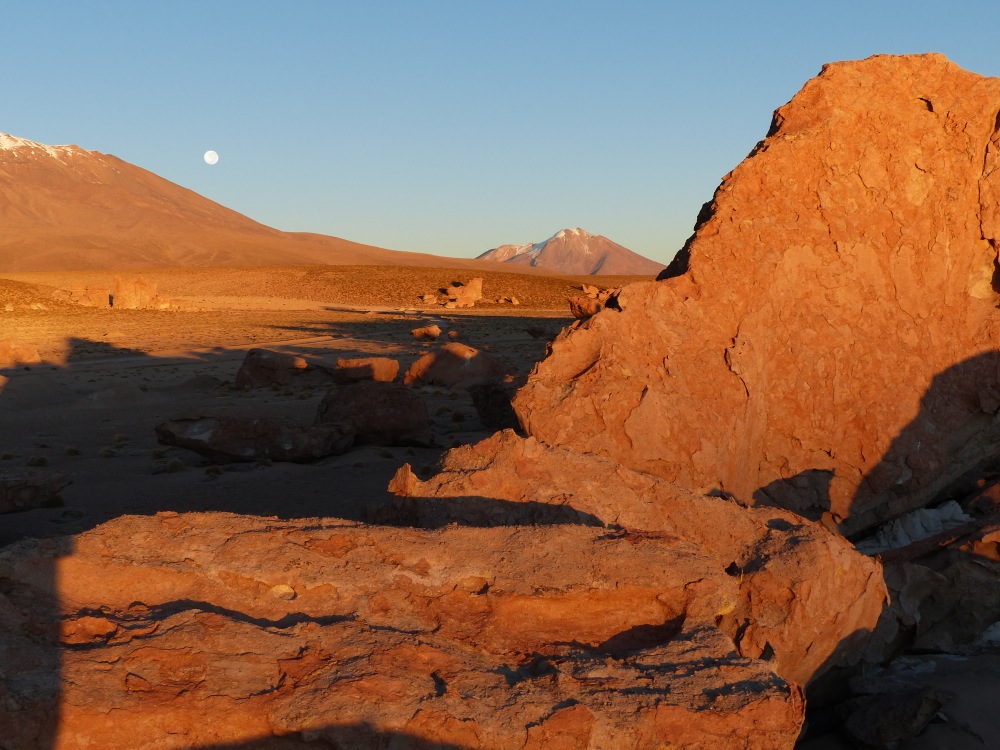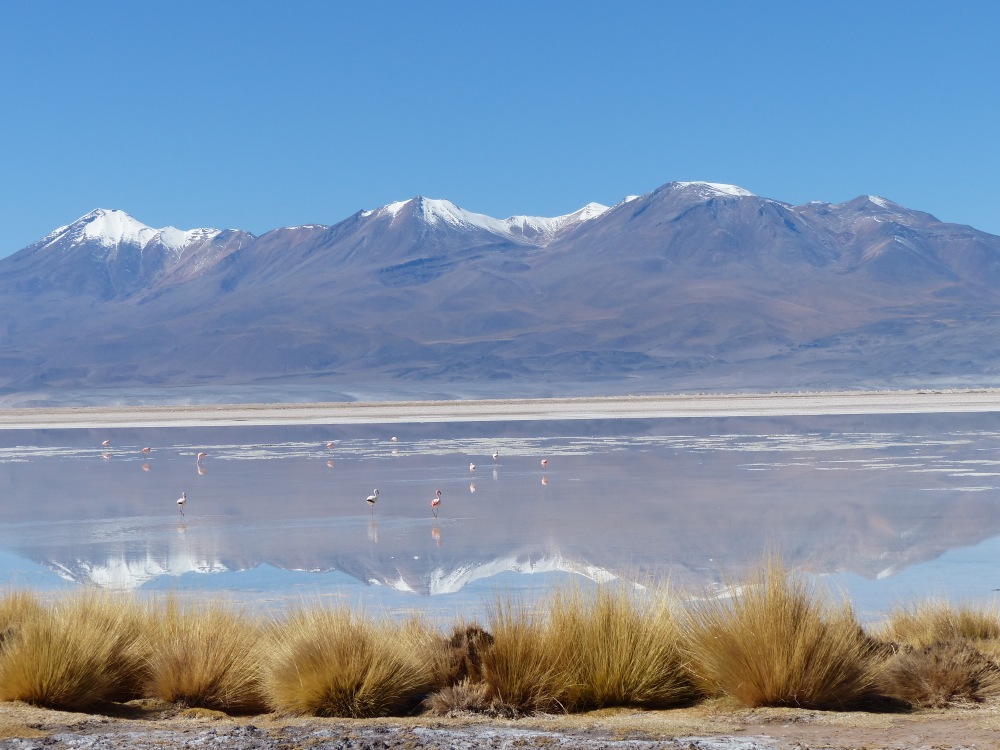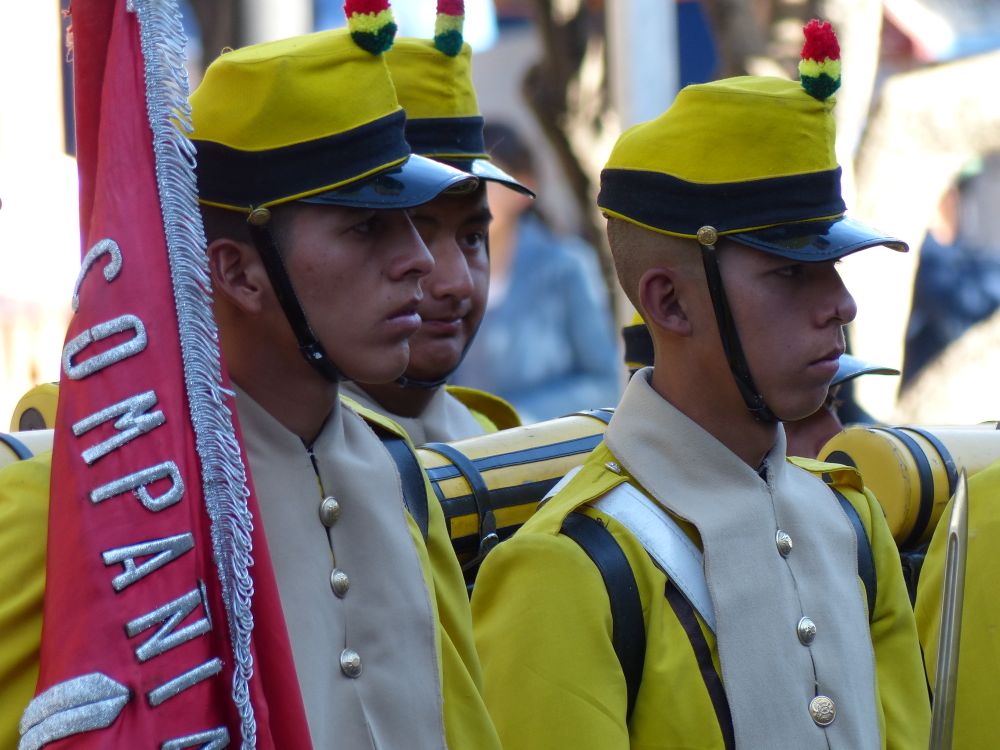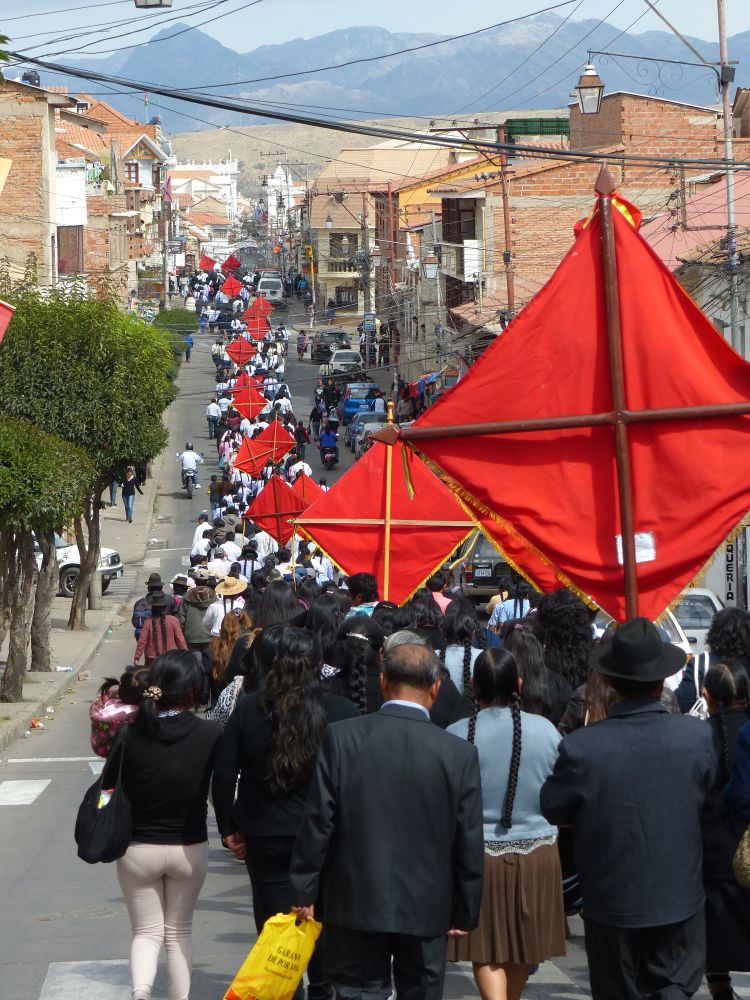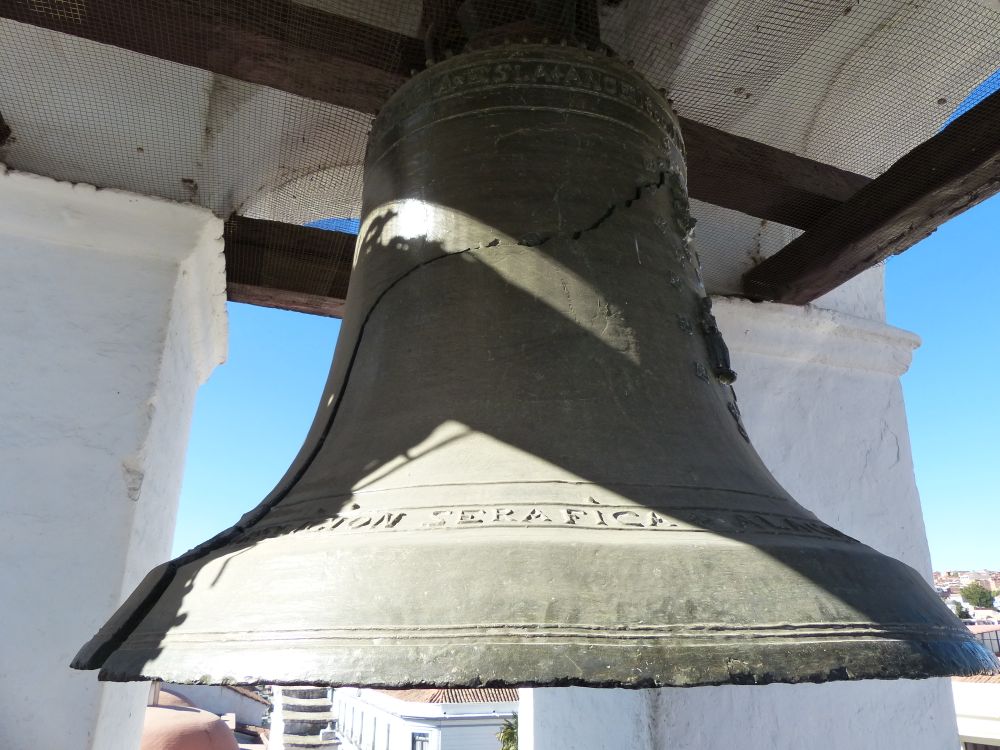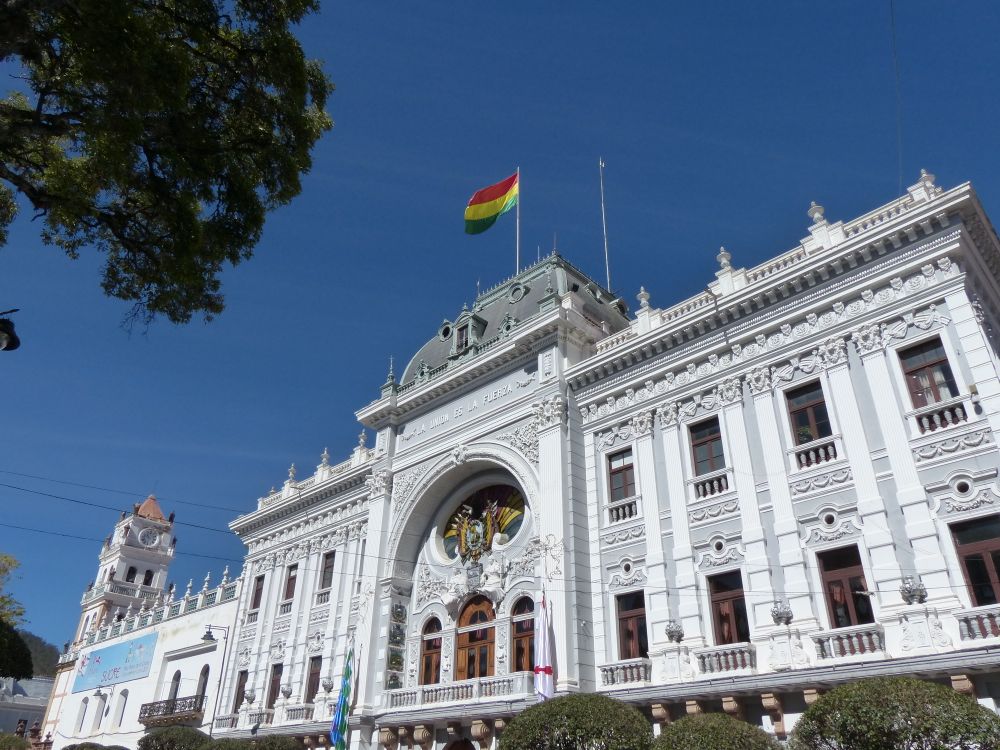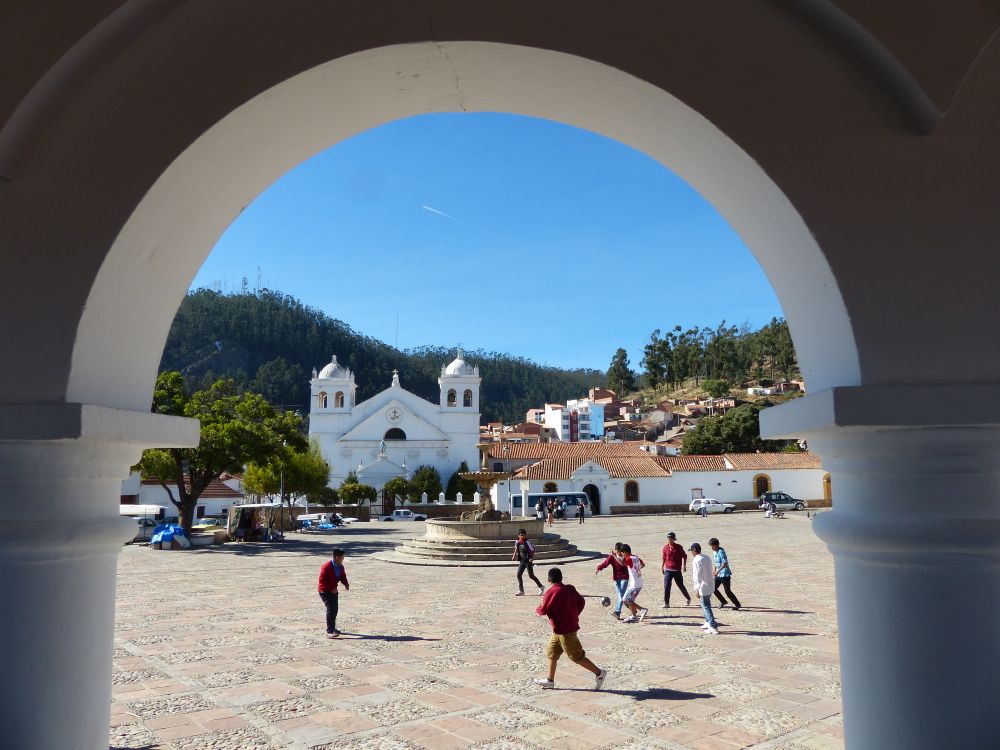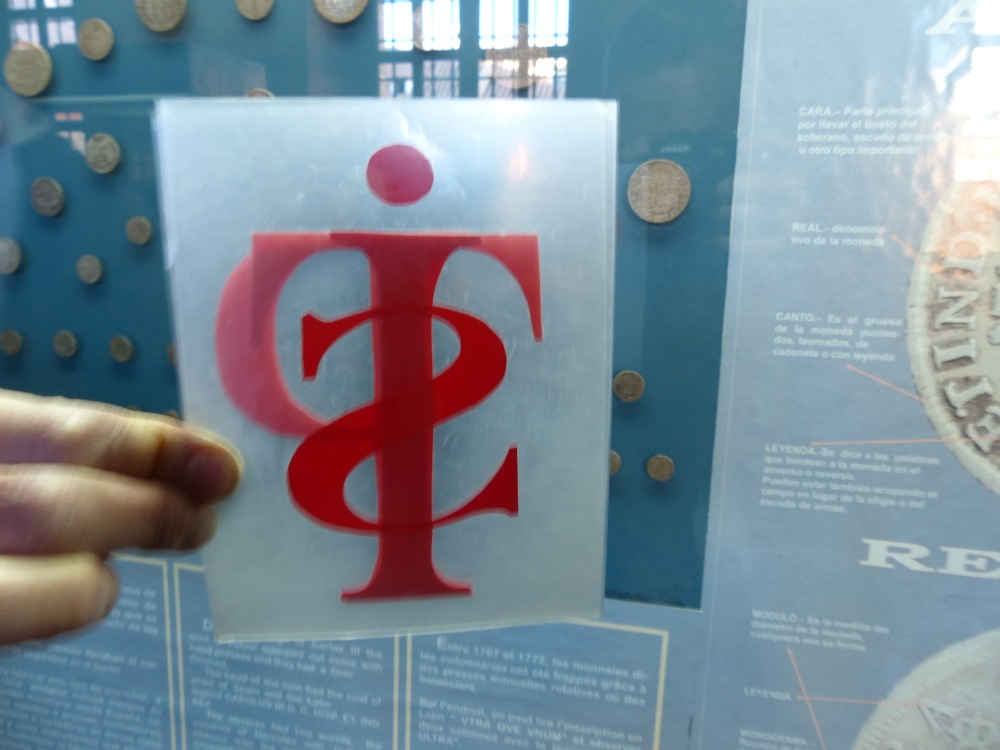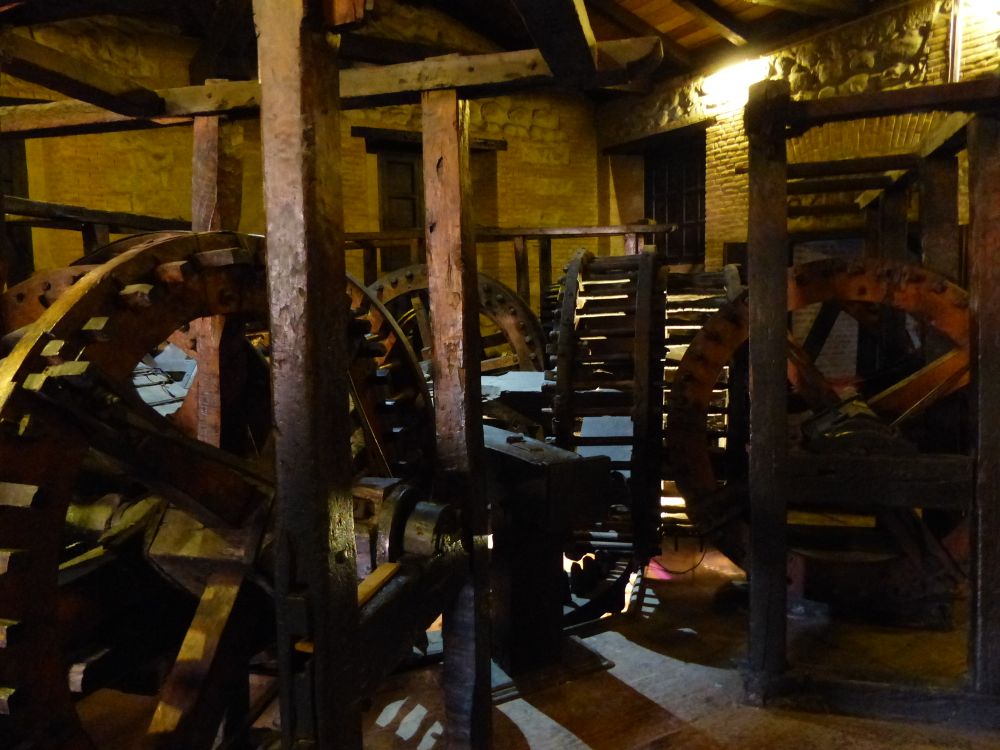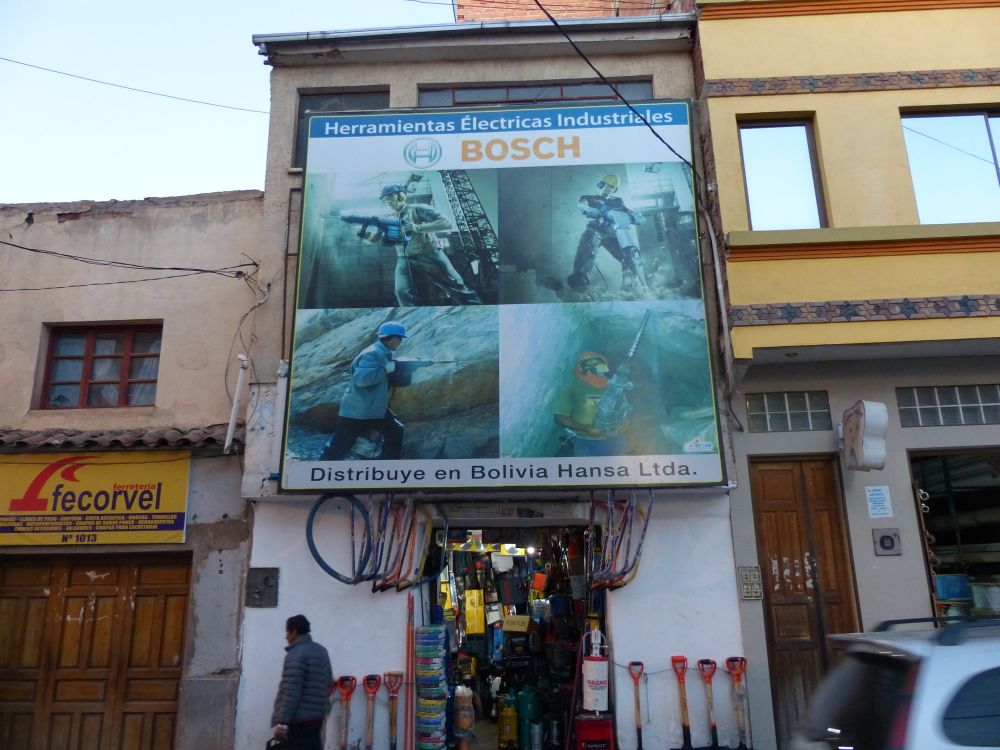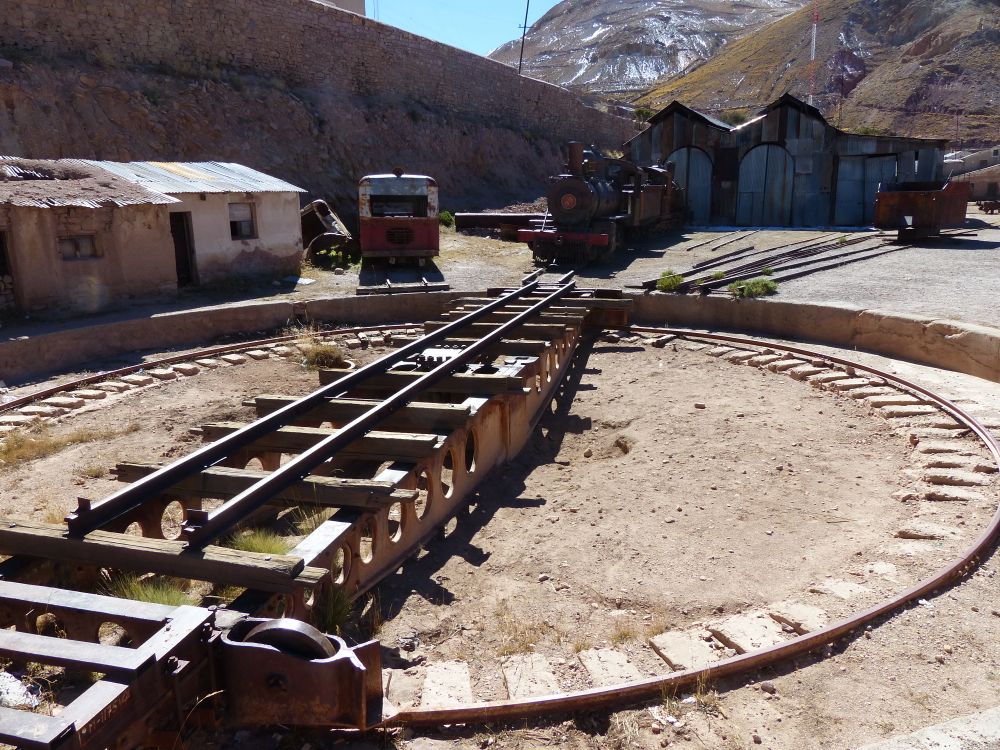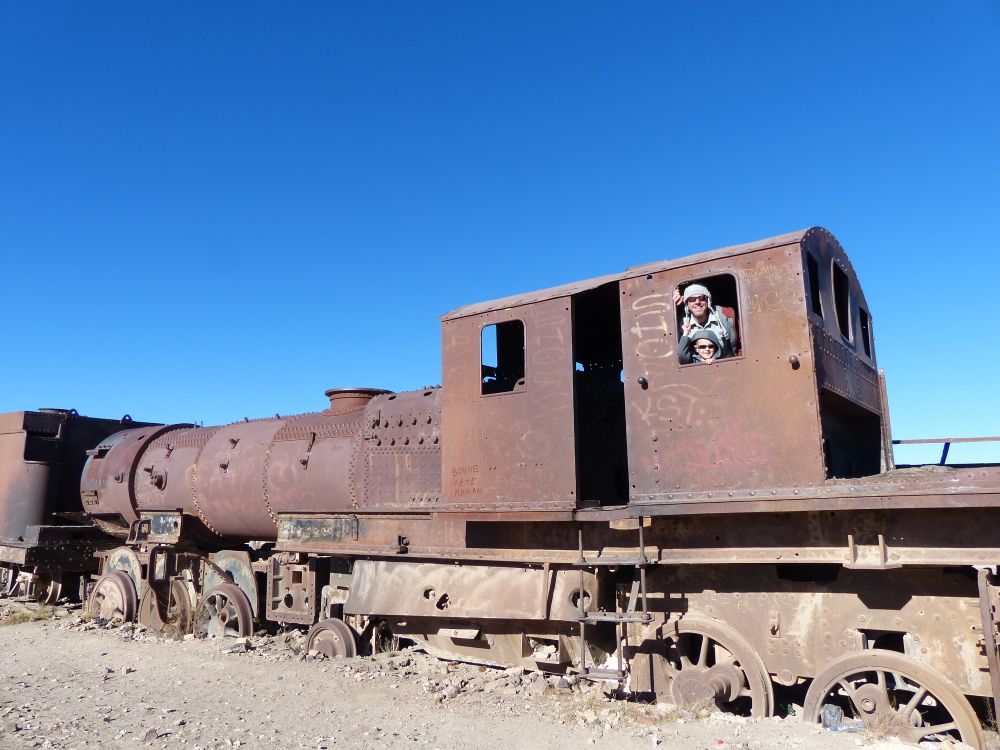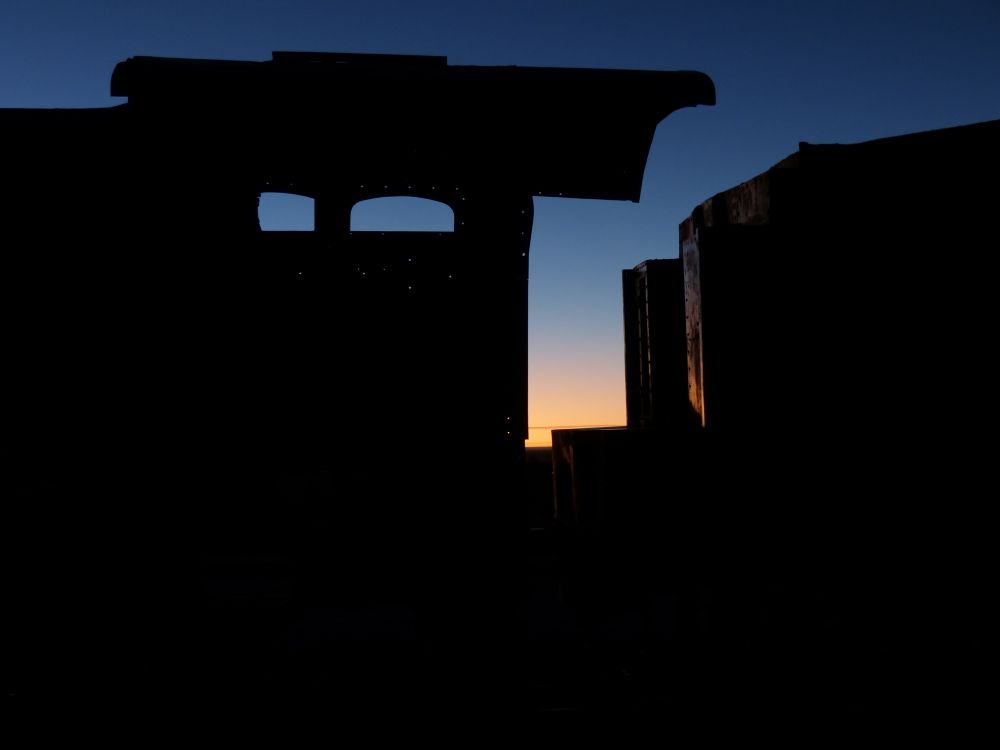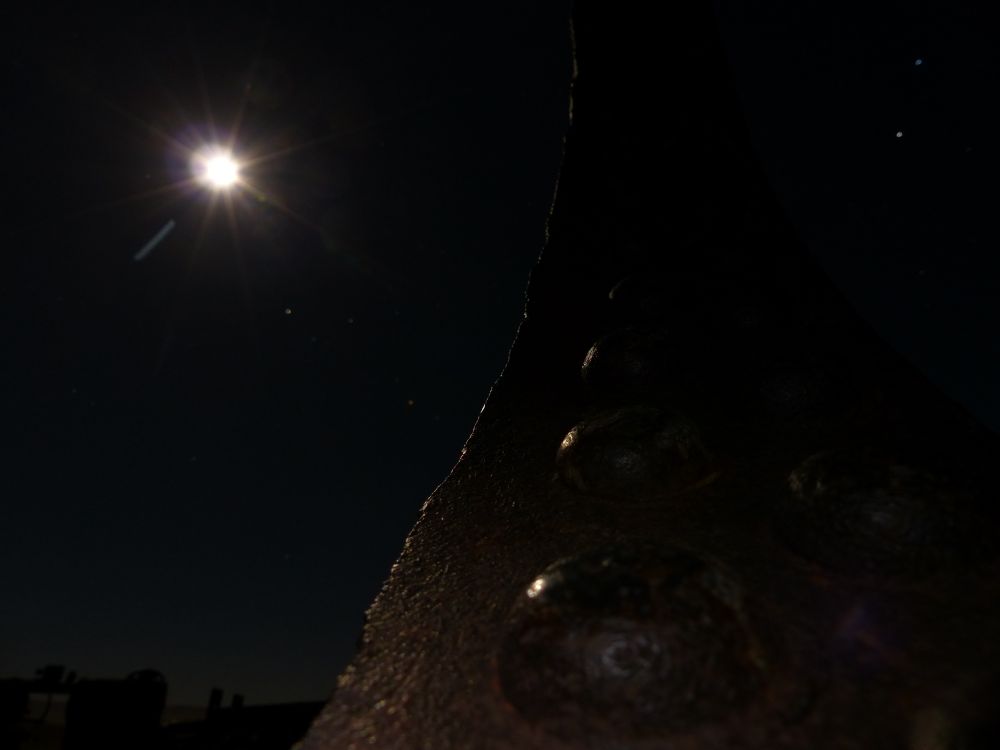About three weeks ago when we first pulled into San Pedro de Atacama after crossing the Salar de Uyuni, our refrigerator stopped working. Part of the reason we stayed in San Pedro for so long (other than work) was to get parts for the fridge mailed to us from Utah. While we were waiting, we sampled some of the offerings available in the region.
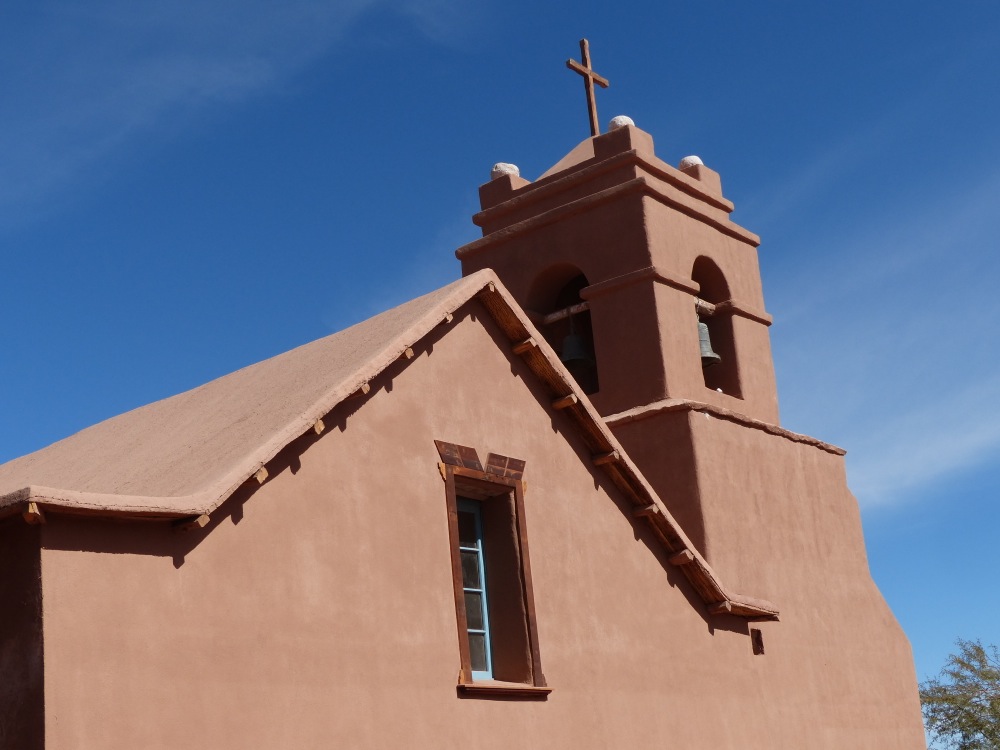
One benefit of our extended stay in San Pedro was that we got to see the beautiful adobe church without its shroud of scaffolding.
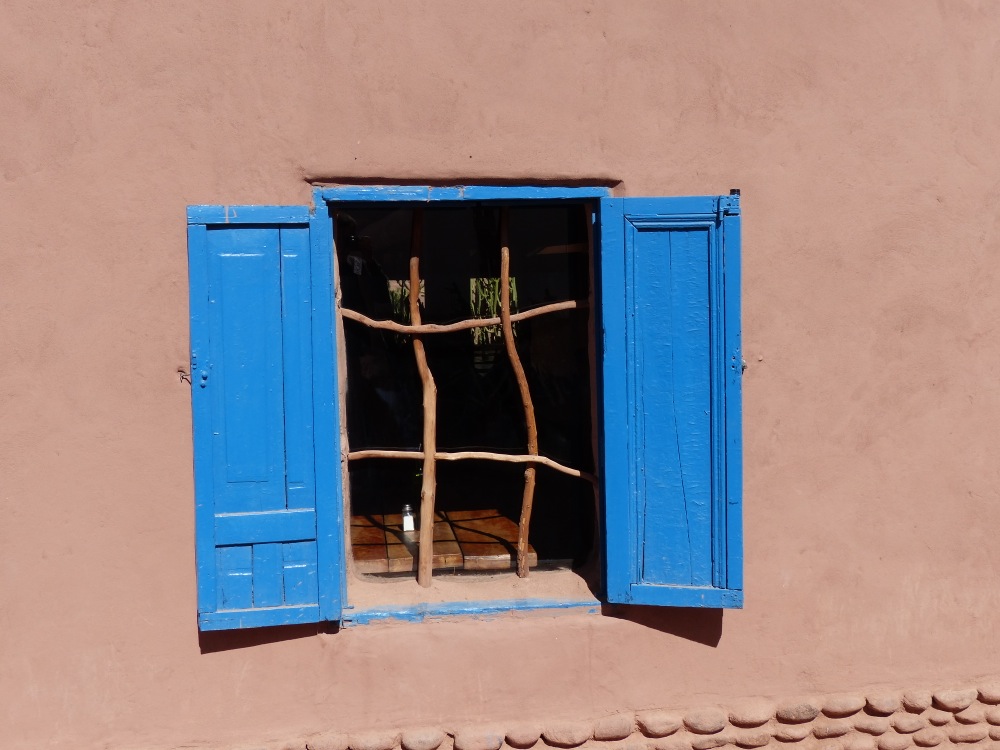
We discovered recently that many of our credit and ATM cards are expiring soon. June of 2015 seemed like so far away when we left on our trip two years ago! Quinn’s grandparents have been kind enough to collect the replacements for us, and since we were stuck waiting for our fridge parts anyway, we asked them to send our new credit cards to us as well. Despite having to make the 4-hour drive from their house to the nearest DHL office, they mailed our cards and new car registration documents for us. Thank you so much!!
The process for receiving a package in Chile goes something like this. First the package gets mailed. It usually only takes 3 days to arrive in Santiago. Then it has to go through customs. Each of our packages took about 5 days for this process. Then DHL notifies you that you owe import duties on your package. Visit the DHL office and pay the taxes. Then they release the package from customs, and about two days later the package arrives at its destination.
For us the destination was Calama, a mining town in Northern Chile. Since the town (and more importantly its only campground) wasn’t that appealing, we decided to wait in the tourist hub of San Pedro, camping at hostels where we could use the fridge in the kitchen. This meant that we had to make the 3-hour round trip drive from San Pedro to Calama three times before we had both of our packages in our hands.
The fridge parts were the first to arrive, and we installed them that evening with high hopes that we’d soon have cold beer once again. Unfortunately it was not to be; the fridge still refused to run.
A few days later it was time to pick up the package containing our credit cards and other necessities, like train tracks. (Doesn’t everyone get train tracks in their care packages?) After retrieving that package we drove to the Tatio Geysers, the world’s highest geyser field.
The Tatio Geysers are apparently most active between six and eight AM. That combined with the fact that they’re at 4320m (over 14,000 feet) in elevation meant that we had to endure some discomfort to see them (namely cold temperatures, lack of sleep due to altitude, and then getting up before sunrise). We drove up the previous evening and camped near the geysers. It got to well below freezing overnight, so we put our water-filled nalgene bottle along with a container of leftover bean soup outside to freeze. This will keep our fridge (turned cooler) cool for a couple of days, we hope. We fired up our heater and snuggled into our sleeping bags for the night.
The next morning as the tour busses started to pull in well before dawn, we dropped the top on our van and followed them to the geyser fields.
With our packages now safely in hand, we were finally free to leave for Argentina. Since we’d decided to cross the border at Paso Sico, which doesn’t have a Chilean customs post, so we did our immigration and customs paperwork in San Pedro. We left town at about 2pm, and since we didn’t want another sleepless night at altitude, we camped in a flamingo reserve on the Salar de Atacama. We’ve decided that Buenos Aires is the best place to try to get our fridge fixed, so we’ve opted to detour south to the “Paris of South America” to either repair or replace it. Our next stop is the Argentinian wine growing region of Cafayate for a week. After that we’ll bolt across the continent to BA. Wish us luck!
